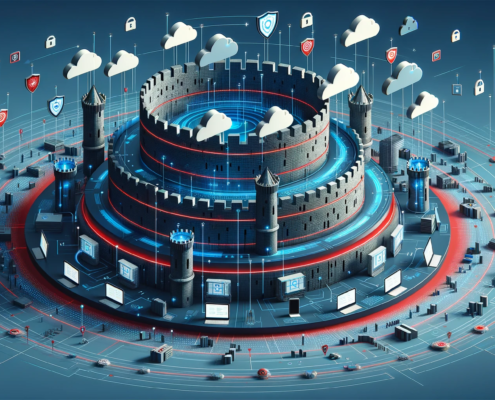 https://www.teamipro.com/wp-content/uploads/2024/04/DALL·E-2024-03-01-02.32.48-Imagine-a-futuristic-digital-landscape-showcasing-a-vast-network-of-advanced-security-features-like-firewalls-encryption-algorithms-and-protective-.webp
1024
1792
Pat Anunciacion
https://ipro23.wpengine.com/wp-content/uploads/2023/07/IPRO.png
Pat Anunciacion2023-11-23 06:00:192024-07-05 05:32:59Shielding the Gates: Innovative Strategies in Network Security for 2024
https://www.teamipro.com/wp-content/uploads/2024/04/DALL·E-2024-03-01-02.32.48-Imagine-a-futuristic-digital-landscape-showcasing-a-vast-network-of-advanced-security-features-like-firewalls-encryption-algorithms-and-protective-.webp
1024
1792
Pat Anunciacion
https://ipro23.wpengine.com/wp-content/uploads/2023/07/IPRO.png
Pat Anunciacion2023-11-23 06:00:192024-07-05 05:32:59Shielding the Gates: Innovative Strategies in Network Security for 2024Embracing the Next Wave of Communication Technology
In today’s world, communicating well is vital to business success. Unified communications (UC) helps by combining phone, video, messaging, and data sharing all in one system, making teamwork more accessible and efficient. This is especially important now as more people work from home or elsewhere. But there’s something new changing the game: artificial intelligence (AI). AI is making UC even more intelligent, adding automation, personalization, and insights that can transform how businesses operate, making work smoother and helping everyone stay better connected.
In this blog, we will explore how AI is changing unified communications. We’ll look at how it’s making systems more intelligent, how it can make messages and meetings more tailored to your needs, and how it helps us better understand and use information. For business leaders and tech experts, understanding these changes means being ready for the future. So, let’s dive into how AI shapes how we communicate at work and sets new standards for business communications.
Understanding Unified Communications
UC is the modern business’s valuable asset for communication, combining phone, video, instant messaging, and file sharing all under one roof. This integration allows the seamless transition between communication methods, which is essential in today’s flexible work environments. However, despite its benefits, UC faces challenges such as user-friendliness, interoperability between different platforms, and ensuring high-level security for sensitive business information. These hurdles highlight the need for continuous improvement and adaptation to keep communication smooth and secure.
For business leaders, CIOs, and CEOs, grasping the nuances of UC is crucial. It’s not just about providing communication tools but about ensuring they are efficient, secure, and conducive to the overall workflow and customer engagement strategies. Effective UC systems can streamline operations, enhance team collaboration, and improve customer satisfaction, making them indispensable in the competitive business landscape. Thus, staying informed and proactive in addressing UC challenges is imperative for maintaining a dynamic and successful business environment.
The Advent of AI in Communications
AI is changing the way we communicate at work. It’s not just about robots or science fiction; it’s about innovative technology that learns and improves over time. AI can handle tasks like sorting emails, setting up meeting reminders, or even analyzing customer feedback to find common themes. This innovative tech is becoming a big part of UC, making connecting and collaborating easier without the usual hiccups.
Machine learning and natural language processing (NLP) are two big AI stars in the UC world. Machine learning helps systems better understand what we need over time, like suggesting faster routes to solve customer issues. NLP lets computers understand us better, whether we’re typing or speaking. These technologies are making UC smarter, helping it understand our patterns, and making communication more intuitive.
Enhancing Automation in Unified Communications
AI is excellent at taking over routine jobs in communication, like sorting through emails to figure out what’s important or scheduling meetings based on everyone’s free time. This kind of automation can save time and hassle, ensuring nothing slips through the cracks.
Benefits of Automation for Businesses
When AI handles the routine stuff, businesses can save money, work more efficiently, and make fewer mistakes. This means teams can focus on the big-picture tasks instead of getting stuck in the weeds. Automation also helps keep things moving smoothly so employees and customers have a better experience.
Looking ahead, AI is set to make an even bigger splash in how we communicate at work. We’re talking about more intelligent systems that can predict needs, offer real-time insights, and make personalized suggestions to help businesses stay ahead of the curve. The future of UC is not just about talking and texting; it’s about creating a more innovative, connected way to work that’s constantly improving.
Personalizing Communication with AI
AI isn’t just making communication faster; it’s making it brighter and more personal. AI can tailor messages, recommendations, and support to fit each person’s unique preferences by analyzing how we talk, what we need, and when we’re most active. This could mean getting a reminder in the way you like best or having customer support chatbots understand your problem faster based on your past interactions.
Boosting Satisfaction and Relationships
Personalization goes a long way in making customers feel understood and valued. When AI helps tailor communication, customers find solutions faster and feel more connected to your business. This personal touch can turn a one-time buyer into a loyal fan. For businesses, this stronger relationship boosts sales and builds a reputation for being attentive and customer-focused.
Navigating Personalization Challenges
However, personalizing with AI isn’t without its hurdles. Privacy is a big concern, as businesses must handle personal information responsibly. There’s also the challenge of getting the personalization right – not too little or too much. Companies must find that sweet spot where communication feels helpful and personal, not intrusive or annoying.
AI-Driven Analytics and Decision Making
AI shines a light on the vast amounts of data flowing through communication channels. It can spot trends, track customer satisfaction levels, and even predict future communication needs. This isn’t just about numbers; it’s about understanding the story behind the interactions, helping businesses improve their services and anticipating customer needs.
The insights drawn from AI can lead to more intelligent business decisions. For example, if AI notices some customers prefer video tutorials over written guides, a business can shift its strategy to meet this preference. This kind of decision-making, informed by real data, can make a big difference in staying competitive and relevant.
Consider a case where a company uses AI to analyze customer call patterns. They might find that most queries come in the evening when staff levels are low. With this insight, they could adjust staffing or provide additional self-service options during those hours, reducing wait times and improving customer satisfaction. This is just one example of how AI can transform the business communication landscape when integrated with unified communications, making it more efficient, responsive, and personalized.
Embracing AI for the Future of Unified Communications
As we wrap up, let’s remember the key points from our discussion: AI is rapidly transforming UC, bringing about significant advancements in automation, personalization, and data analysis. These changes are creating more efficient, responsive, and tailored communication experiences in the business world. It’s clear that integrating AI into UC systems is beneficial and essential for modern businesses aiming to stay competitive and meet the evolving expectations of their customers and teams.
Therefore, business leaders should integrate AI technologies into their communication strategies. Staying updated with technological advances and being adaptable to change are crucial steps in this journey. For those looking to enhance their communication systems with AI but need help figuring out where to start, partnering with an experienced IT company like IPRO can provide the necessary guidance and support. By doing so, businesses can ensure they are leveraging the full potential of AI to revolutionize their communication processes and drive future success.
 https://www.teamipro.com/wp-content/uploads/2024/04/DALL·E-2024-03-01-02.32.48-Imagine-a-futuristic-digital-landscape-showcasing-a-vast-network-of-advanced-security-features-like-firewalls-encryption-algorithms-and-protective-.webp
1024
1792
Pat Anunciacion
https://ipro23.wpengine.com/wp-content/uploads/2023/07/IPRO.png
Pat Anunciacion2023-11-23 06:00:192024-07-05 05:32:59Shielding the Gates: Innovative Strategies in Network Security for 2024
https://www.teamipro.com/wp-content/uploads/2024/04/DALL·E-2024-03-01-02.32.48-Imagine-a-futuristic-digital-landscape-showcasing-a-vast-network-of-advanced-security-features-like-firewalls-encryption-algorithms-and-protective-.webp
1024
1792
Pat Anunciacion
https://ipro23.wpengine.com/wp-content/uploads/2023/07/IPRO.png
Pat Anunciacion2023-11-23 06:00:192024-07-05 05:32:59Shielding the Gates: Innovative Strategies in Network Security for 2024
Strategies for Enhancing Your Business Cyber Resilience



